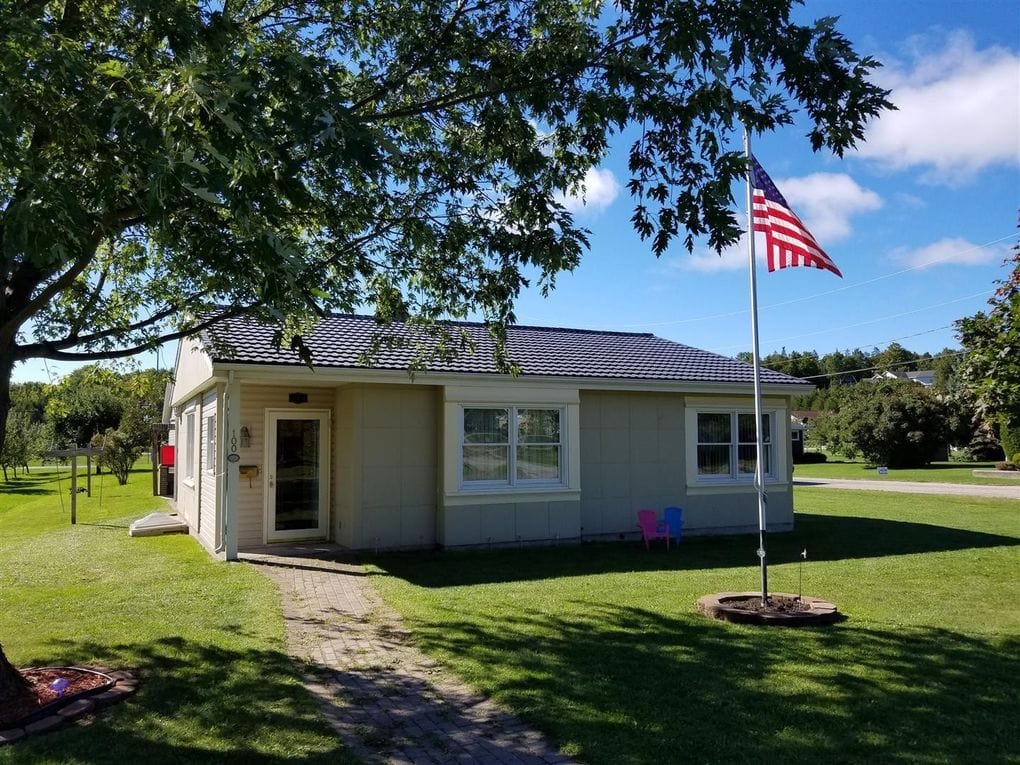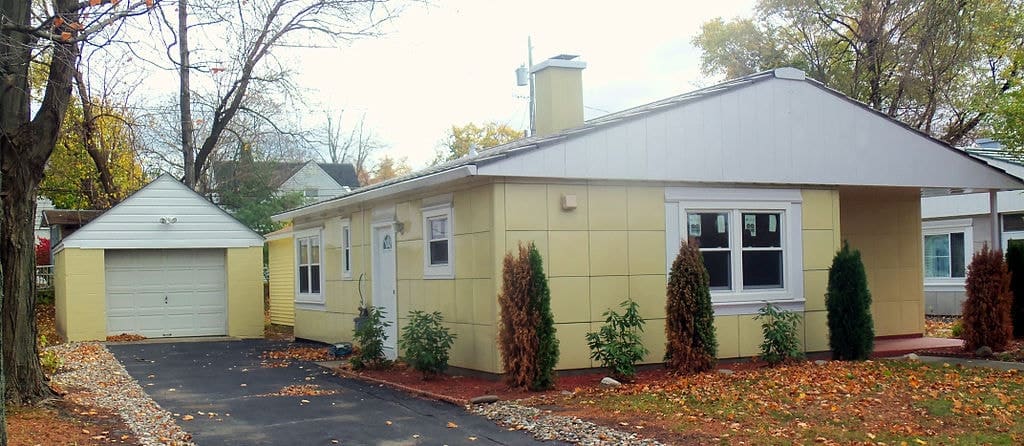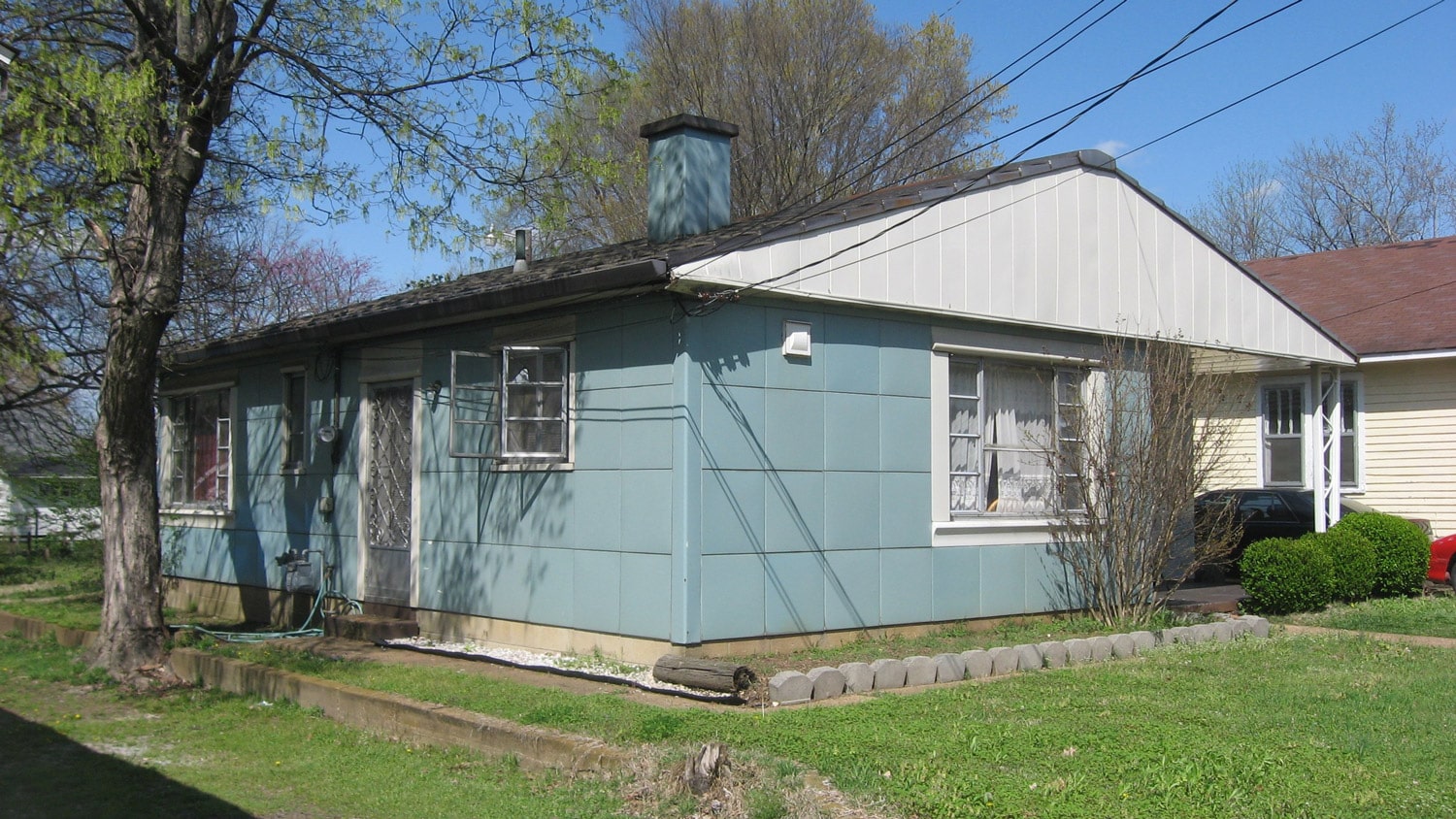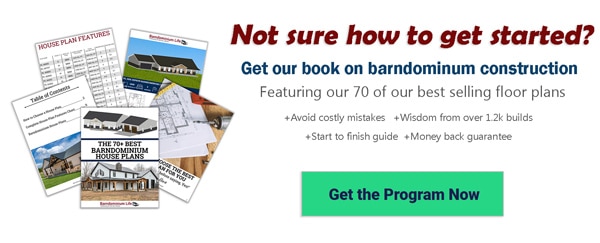Lustron Homes | The Original Metal Bungalow House
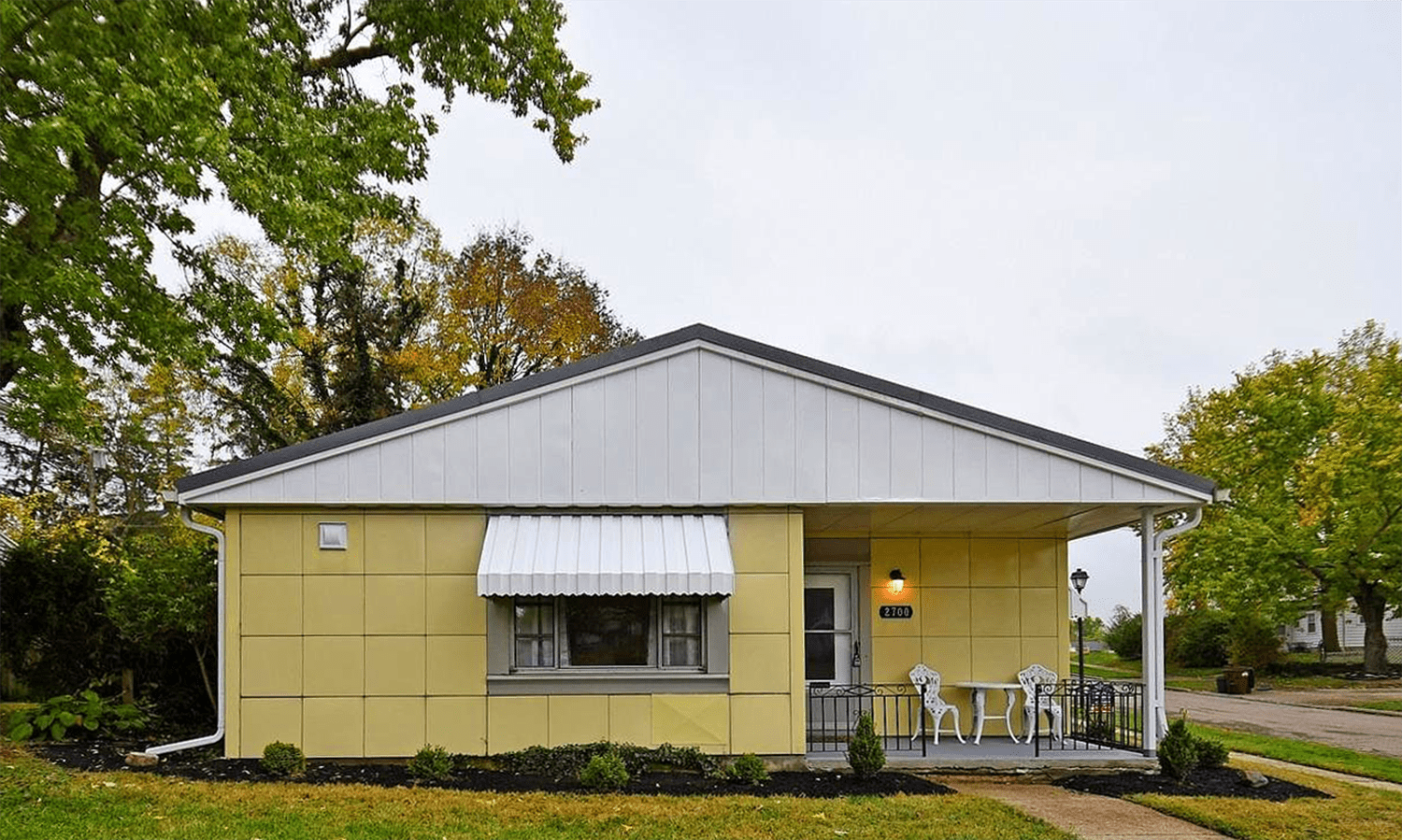
All metal homes are becoming a popular choice for new construction due to the long-lasting, naturally resistant materials. Since these homes are often prefabricated in a factory, builders maintain a higher-quality standard and homes are erected faster.
Lustron Homes produced some of the first homes made out of metal in the U.S.
Lustron Corporation last built a home in 1950, but they’re still regarded as some of the best metal homes you can buy.
Lustron House History
Lustron Homes was envisioned and brought to life by Carl Strandlund. Strandlund realized that G.I.s were returning from World War II and there weren’t enough homes on the market to meet demand. He wanted to create homes that were:
- Durable
- Low maintenance
And he knew that modern families of the time didn’t want to fix up homes or repaint them. After all, these men were returning home from the war. They wanted to settle into their homes with as little headaches and hard work as possible.
The idea was a major hit.
Lustron Homes produced over 2,000 homes between 1947 and 1950, but they didn’t have the capital to repay Reconstruction Finance Corporation, which provided startup loans to Lustron.
The three-year building boom of the company may have been short, but Lustron Homes left a mark on the construction industry that is still prevalent today.
When the company was started, the goal was to:
- Build 15,000 homes the first year
- Build 30,000 homes in the second year
Unfortunately, the company’s Columbus, Ohio plant was only able to produce a total of 2,498 homes between 1948 and 1950. The homes sold for $8,500 to $9,500.
What Made Lustron Homes Unique?
Lustron Homes still exist today, and many of these metal homes are on the National Register of Historic Places. The houses were made of metal, allowing them to be durable and fast to build.
Price was a major benefit, as most of the homes cost 25% less than conventional homes. However, prices did rise to $10,500 before the company went out of business.
Still, G.I.s were able to purchase these homes for significantly less than their conventional home counterparts.
Most of the homes were built in the U.S., in 36 states, except for a few houses built in Venezuela.
The enameled-steel design was promoted as a structure that didn’t require painting and would:
- Free up time for mothers
- Create fewer worries for kids
- Add many hours of leisure for men
Lustron Homes made use of mass manufacturing, with a steel framing system that allowed for:
- Roof-ceiling trusses
- Vertical steel studs
- Panels easily attached (interior and exterior)
Strandlund wanted to construct gas stations initially, but due to regulations on steel, the Truman administration would only allow the builder to obtain steel if they agreed to build residential units.
It’s estimated that each home had 3,300 unique parts that were put on trailers and delivered to a building site. Builders and dealers made agreements with Lustron Homes to build the company’s homes on concrete foundations.
The company had a total of eight miles of conveyor belts, a bathtub press, and 11 enameling furnaces.
Unfortunately, over the first 20 months of operation, the company lost money on each of the homes they built. While the houses were made well and many remain today, the company didn’t have the money to repay the $12.5 million loan that they received from Reconstruction Finance Corporation.
For each home, the company used 12 tons of steel and an additional ton of enamel.
In terms of construction time, the homes took 400-man hours to make in the factory and an added 300-man hours to fully erect.
The vast majority of the homes were put on a concrete slab, but some were built over a basement. Many homeowners didn’t request a basement because it required an engineer or architect to build the structure.
Initial Home Models and Production
Initially, the builder offers a 1,000 square-foot bungalow home featuring two bedrooms and 2-foot square steel panels for the exterior. During the company’s last years in operation, they expanded their portfolio of homes to include a one-bedroom and a three-bedroom model.
Alternate floor plans were eventually an option for the two-bedroom models.
Lustron Homes offered the following color options:
- Interior colors: beige or gray
- Exterior colors: pink, tan, aqua, blue, green, gray and yellow
Benefits of Buying A Lustron House
The first homes made out of metal in the U.S. were made with the idea of using as many square inches of the home as possible. Space efficiency was a focal point, with homes including:
- Built-in vanities
- Overhead storage space
- Sliding doors in the bedrooms
- Built-in buffet tables in the dining room
- Kitchen pass-throughs
- Built-in washing machines in the kitchen
- Dishwasher rack
- Utility rooms with a furnace and hot water heater
When it came to heating the homes, the company used an oil-fired hot air furnace that was mounted to the ceiling. The furnace was meant to heat the metal ceiling tiles, with the idea of the entire home being heated.
Unfortunately, Lustron Homes didn’t realize that the heat was not as even and comfortable as they thought it would be.
And the floors remained quite cold due to hot air rising. As a result, the furnaces were often swapped out for a traditional forced-air system that used ductwork to heat all of the rooms evenly.
Lustron Homes also promoted their homes as being:
- Fireproof
- Rustproof
- Pest-proof
The company also made claims that the homes never needed to be reroofed or repainted due to the design of the house. Lustron Homes made a splash with its unique design and claims. In total, over 50,000 potential buyers viewed the model Lustron Homes put up in Chicago.
Lustron Homes were revolutionary for the time, and they were exceptionally well-built.
While many of the 2,500 homes no longer exist, there are 70 remaining in and around St. Louis. In the past 50 years, only three of these homes needed to have the roof replaced. The need for a replacement roof was a result of storm damage and not normal wear and tear.
One of the main drawbacks of Lustron Homes is that there are no repair materials.
While the homes are very durable, the sliding doors are an issue because no one sells roof rollers for them. However, for home buyers that want a truly maintenance-free home, the Lustron Homes are almost perfect.
You can even hose off the exterior and use a brush to scrub them down if they become dirty.
Lustron Homes were way ahead of their time, and if it weren’t for profit margin issues, the company might have become a major success. The company would sell their homes to developers for $6,000 even when they cost $7,000 to build.
While raising the price to $10,500 helped the company make more money, their losses of over $500,000 a year were too much to overcome.
Even though Lustron Homes was receiving loans from the government, they could never hit the 100 homes per day construction goal that they set for themselves. Instead, they produced less than 20 homes a day.
In total, Lustron Homes received over $37 million in loans that they never paid back. As a result, the company went bankrupt, with over 8,000 housing units under contract that were never built.
For a complete list of Lustron houses please see this Wikipedia reference.

